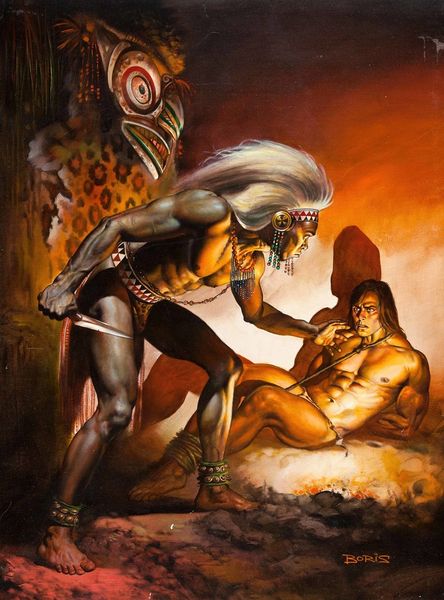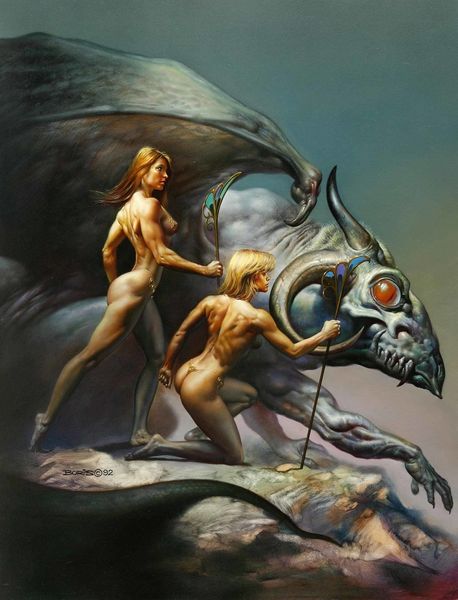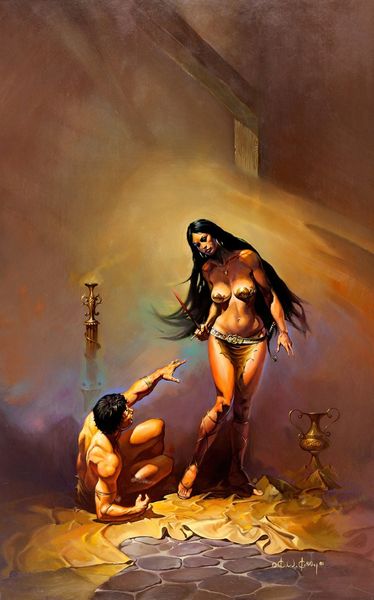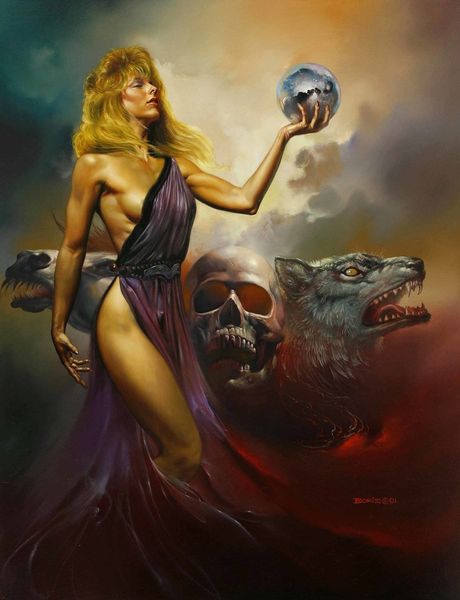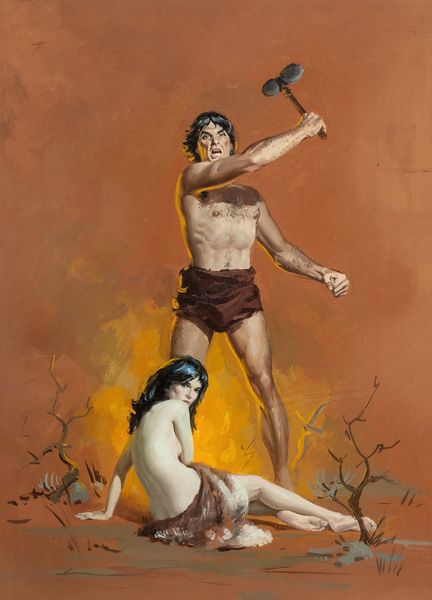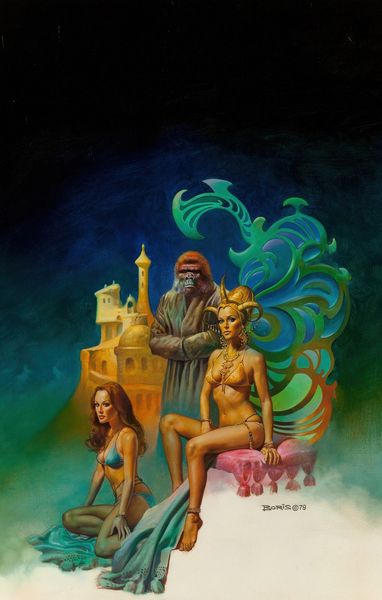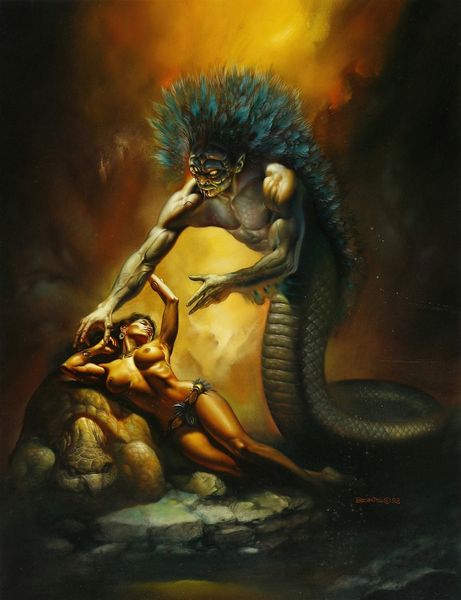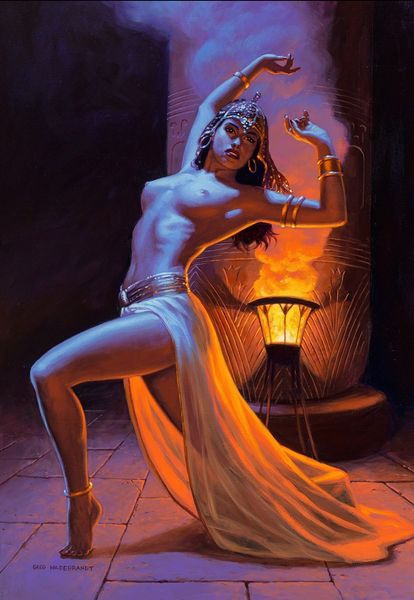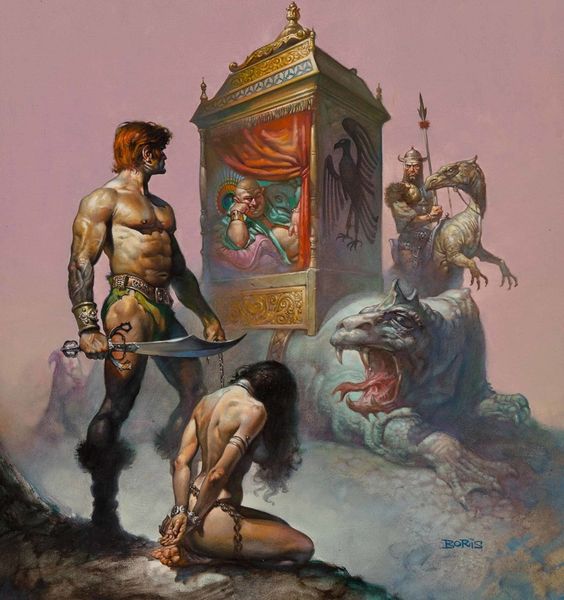
painting, acrylic-paint
#
portrait
#
painting
#
landscape
#
fantasy-art
#
acrylic-paint
#
figuration
#
animal portrait
#
portrait drawing
#
expressionist
#
erotic-art
Copyright: Modern Artists: Artvee
Editor: Boris Vallejo’s "Wolves", painted in 1984, presents such a striking image. The acrylic application gives the figures this otherworldly sheen, and it has this hazy quality that feels both erotic and menacing. I’m immediately curious about its placement of power; who has it and who is vulnerable. What are your initial thoughts when you see this work? Curator: I think that’s a good entry point. Vallejo's art, deeply embedded in fantasy and eroticism, gained significant traction within a cultural landscape shaped by evolving attitudes towards sexuality and the body. His rise coincided with a growing market for fantasy art, bolstered by the popularity of genre films and literature. What I find interesting here is considering how its hyper-sexualized imagery, a hallmark of much fantasy art of the time, might resonate differently depending on shifting sociopolitical attitudes toward gender, representation, and censorship. Do you see anything in the visual composition that might play into those power dynamics you mentioned? Editor: The male figure dominates the upper frame, casting a shadow literally and figuratively over the female figure who is smaller and reclined. Even the shadowy wolf seems more aligned with him. I’m thinking about the male gaze. Curator: Precisely. Consider also the historical role of museums and galleries in showcasing and, arguably, legitimizing such representations. Vallejo's work exists within a broader visual culture where certain bodies are consistently objectified and consumed. Thinking about whose gaze is centered becomes important: are we invited to identify with the male figure? What impact does that have? Editor: It’s made me realize how easily some images, however skillfully executed, perpetuate potentially harmful narratives, especially if presented without critical context. It encourages you to ask further questions of yourself and of the artwork. Curator: Agreed. And it illustrates the evolving responsibilities of museums to actively challenge and reframe the historical biases inherent within their collections and exhibitions.
Comments
No comments
Be the first to comment and join the conversation on the ultimate creative platform.

